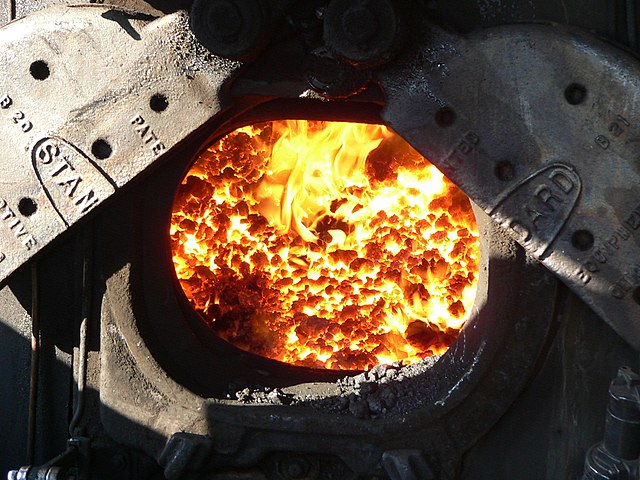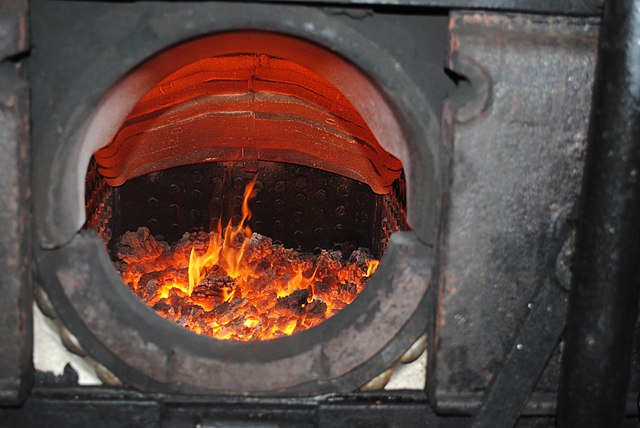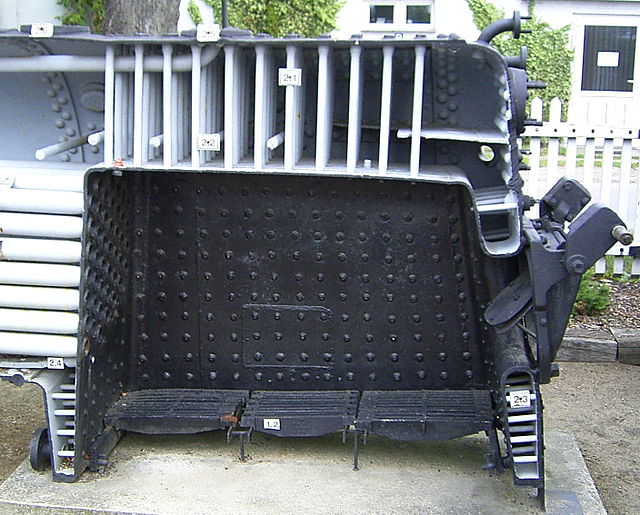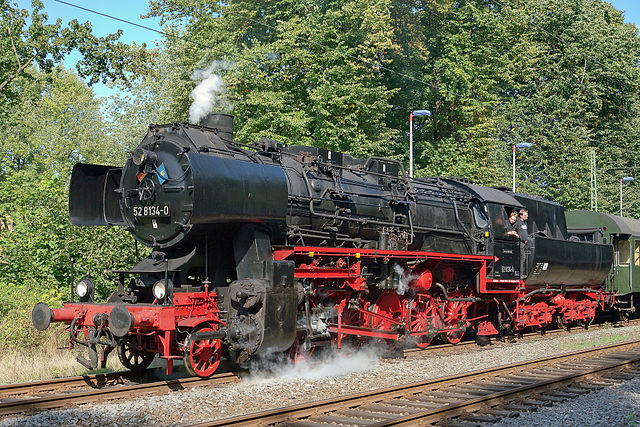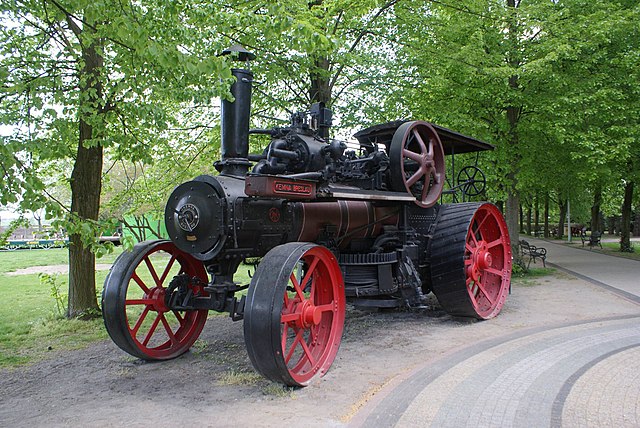In a steam engine, the firebox is the area where the fuel is burned, producing heat to boil the water in the boiler. Most are somewhat box-shaped, hence the name. The hot gases generated in the firebox are pulled through a rack of tubes running through the boiler.
The firedoor into the firebox of a steam locomotive. The firebox peak temperature is approximately 2,500 °F (1,370 °C)
Firebox of a GWR 6959 Class steam locomotive, showing the underside of the brick arch, constructed from specially-shaped firebricks.
Empty firebox of a Baureihe 52, showing the brick arch
Cutaway of locomotive firebox and boiler with radial stays
A steam engine is a heat engine that performs mechanical work using steam as its working fluid. The steam engine uses the force produced by steam pressure to push a piston back and forth inside a cylinder. This pushing force can be transformed, by a connecting rod and crank, into rotational force for work. The term "steam engine" is most commonly applied to reciprocating engines as just described, although some authorities have also referred to the steam turbine and devices such as Hero's aeolipile as "steam engines". The essential feature of steam engines is that they are external combustion engines, where the working fluid is separated from the combustion products. The ideal thermodynamic cycle used to analyze this process is called the Rankine cycle. In general usage, the term steam engine can refer to either complete steam plants, such as railway steam locomotives and portable engines, or may refer to the piston or turbine machinery alone, as in the beam engine and stationary steam engine.

A model of a beam engine featuring James Watt's parallel linkage for double action
A mill engine from Stott Park Bobbin Mill, Cumbria, England
A steam locomotive from East Germany. This class of engine was built in 1942–1950 and operated until 1988.
A steam ploughing engine by Kemna

